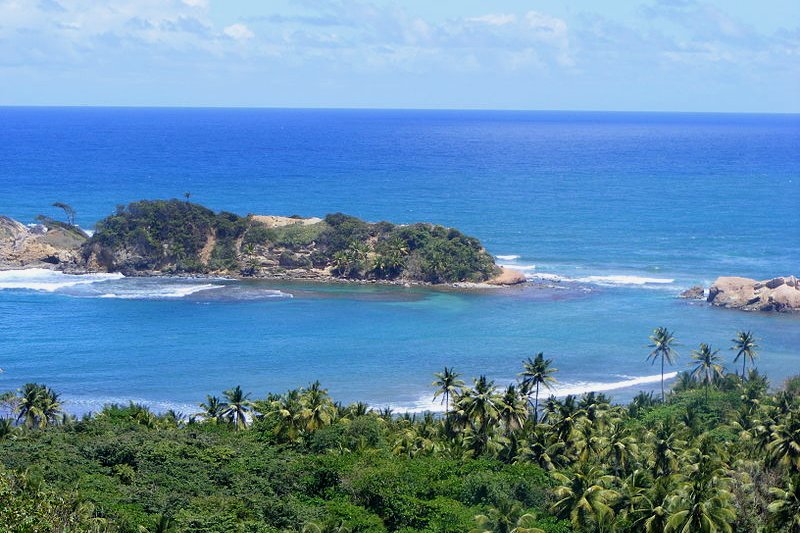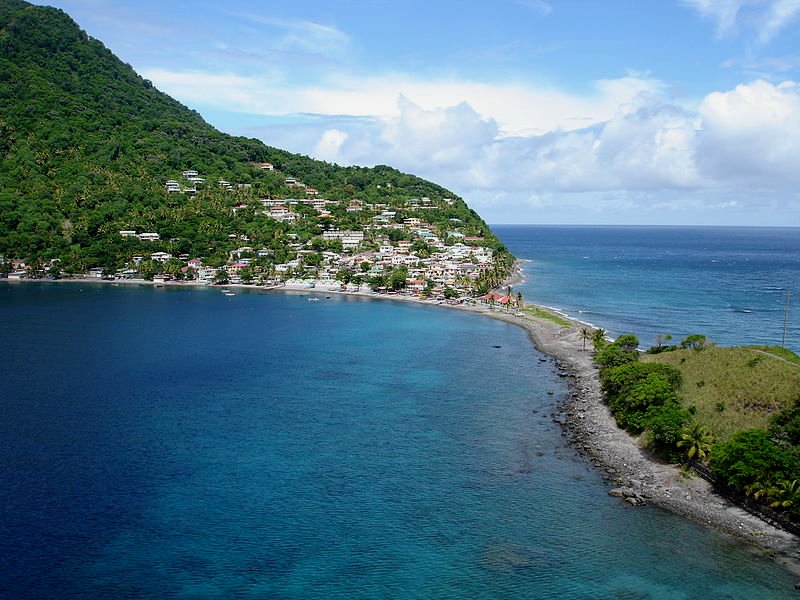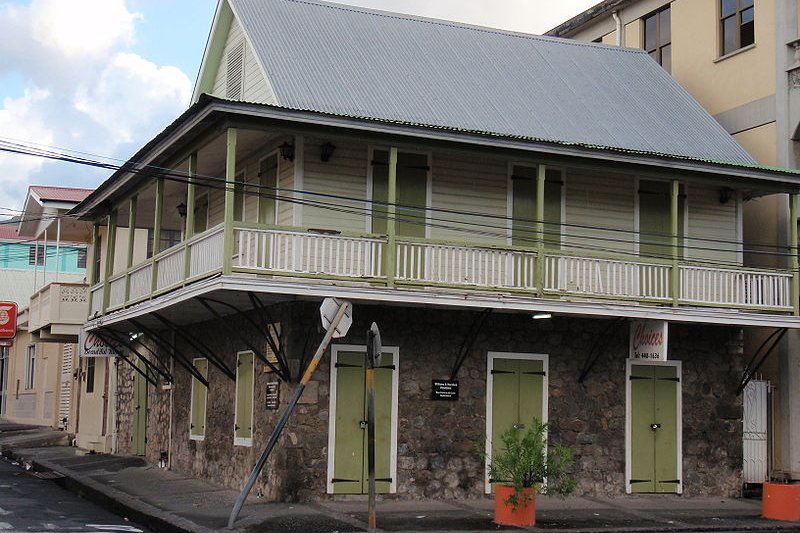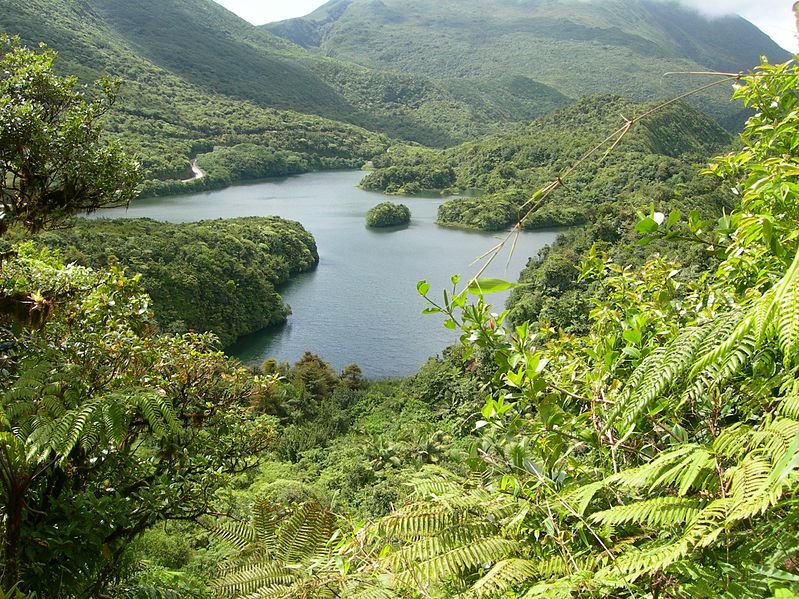 Seaside view in Dominica
Seaside view in DominicaSource: https://commons.wikimedia.org/wiki/File:View_from_Veranda.jpg
Author: Rita Nerwall

Dominica, not to be confused with the Dominican Republic, is a small island nation in the Caribbean Sea. It covers 750 sq km (290 sq mi) and has a population of about 73,000 (2011 estimate). The capital and largest city is Roseau. The island is covered with lush mountainous rainforest, rising to a height of 1,447 m (4,747 ft) at Morne Diablotins. Dominica is geologically the youngest island in the Lesser Antilles with ongoing geothermal volcanic activity and the second largest boiling lake in the world.
 Soufriere Bay, Dominica
Soufriere Bay, DominicaSource: https://commons.wikimedia.org/wiki/File:Soufriere_bay_1.JPG
Author: Riba

Being a former British colony, Dominica uses English as the official language. It is in the Eastern Caribbean Time zone, which is four hours behind Coordinated Universal Time. Traffic is driven on the left, as in Britain. Phone IDD code is +1-767.
The official currency of Dominica is the East Caribbean dollar (XCD). In 2009, it has a nominal GDP of $362 million, equivalent to a per capita nominal GDP of $4,948. Its per capita GDP at purchasing power parity is $10,177.
 House in Roseau, Dominica
House in Roseau, DominicaSource: https://commons.wikimedia.org/wiki/File:Roseau_in_the_morning.jpg
Author: Nelro

The name Dominica means Sunday in Latin. The name was given by Christopher Columbus as he spotted the island on that day, on 3 November, 1493. The island was inhabited by the Carib people. In the hundred years following Columbus's discovery of the island, it was not settled by Europeans, though Caribs from neighboring islands sought refuge there, as they were driven away by the arrival of Europeans.
In 1635, Dominica was claimed by France, and soon French settlements and missionaries were arriving there. The island was ceded by France to Britain in the 1763 Treaty of Paris, but during the American Revolutionary War, the French successfully invaded and got it back. Nonetheless it was returned to Britain once more in the 1783 Treaty of Paris. The French attempted to take it by force twice more, in 1795 and 1805, but failed in both attempts.
 Boeri Lake, Dominica
Boeri Lake, DominicaSource: https://commons.wikimedia.org/wiki/File:Boeri_Lake.jpg
Author: Charlottea

With the continuous increase in its population of ethnic African background, Dominica became the first British Caribbean colony where the government was controlled by the African majority. (Today over 86% of the population are blacks). It was a British crown colony from 1896 until 1958, when it became a province of the short-lived West Indies Federation. Dominica gained independence in 1978.
Planning your trip to Dominica
Visitors from the United States, Canada, Singapore and the European Union are granted automatic visas for up to 21 days. The two main airports in Dominica are the Melville Hall Airport (DOM) and the Canefield Airport (DCF).Preparing Money for your trip to Dominica
The currency used in Dominica is the East Caribbean dollar (XCD).Major Cities in Dominica
- Roseau - capital
- Portsmouth
- Scott's Head
Places of Interest in Dominica
- Calibishie
- Champagne
- Melville Hall
World Heritage Sites in Dominica
Dominica ratified the World Heritage Convention on 4 April 1995. As of August 2010, it has only one World Heritage Sites, in the natural category. Dominica does not presently have any sites on the World Heritage Tentative List.-
Natural
- Morne Trois Pitons National Park (1997)
 Latest updates on Penang Travel Tips
Latest updates on Penang Travel Tips
 Discover with Timothy YouTube Channel
Discover with Timothy YouTube Channel
 PG Food Channel
PG Food Channel
 Learn Penang Hokkien YouTube Channel
Learn Penang Hokkien YouTube Channel
 SojiMart Videos
SojiMart Videos
Latest from Discover with Timothy: Gurney Bay - what to see and do there
About this website

Hello and thanks for reading this page. My name is Timothy and my hobby is in describing places so that I can share the information with the general public. My website has become the go to site for a lot of people including students, teachers, journalists, etc. whenever they seek information on places, particularly those in Malaysia and Singapore. I have been doing this since 5 January 2003, for over twenty years already. You can read about me at Discover Timothy. By now I have compiled information on thousands of places, mostly in Peninsular Malaysia and Singapore, and I continue to add more almost every day. My goal is to describe every street in every town in Malaysia and Singapore.
Robbie's Roadmap
- Episode 1: Robbie's Journey to Financial Freedom
- Episode 2: Lost in America
- Episode 3: The Value of Money
- Episode 4: The Mentor
- Episode 5: The Thing that Makes Money
- Episode 6: The walk with a Billionaire
- Episode 7: The Financial Freedom Awakening
- Episode 8: Meet Mr Washington
- Episode 9: The Pizzeria Incident
Copyright © 2003-2024 Timothy Tye. All Rights Reserved.


 Go Back
Go Back